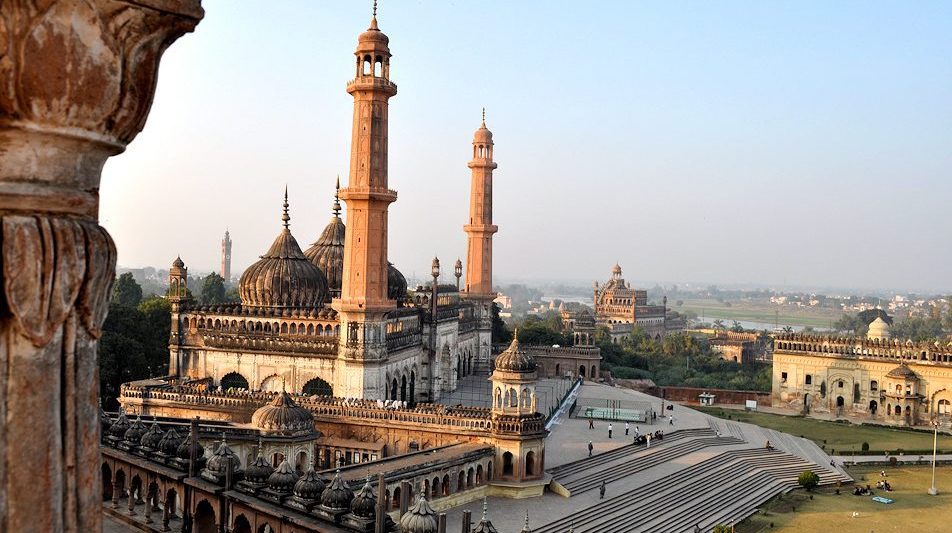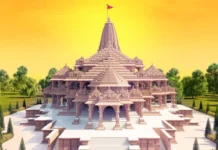Why is Lucknow Called “Nawabo Ka Shahar”? – Lucknow is located in the region historically known as Awadh. Because of its fascinating history, Lucknow is known as the City of Nawabs. Lucknow has long been a cosmopolitan city where the Shia Nawabs have always enjoyed the lifestyle, fine cuisine, languages, dress, courtesies, lovely gardens, poetry, and music. This city is filled with traces of royal life.

Why is Lucknow Called “Nawabo Ka Sehar”?
Today, Lucknow is known as the City of Adab and Nawabs. The words in this instance, are more palatable than sweets. The history of Nawabs in Awadh begins in 1722. The Awadh dynasty was formed here by Saadat Ali Khan. He was chosen to lead Awadh on behalf of the Delhi-based Mughal Sultanate. The final Nawab of Awadh, however, was Wajid Ali Shah. The British imprisoned him in Calcutta, where he died on September 21, 1887.
The forts of the Nawabs Ambedkar Park, Moti Mahal, Imambara, and the Hazratganj market also feature some unique historical sites. The glory of these royal buildings and parks on every corner of the city makes them royal.
Some of the royal sites that have made Lucknow city famous as Nawabo Ka Sahar all over the world:
Bara Imambara
Bara Imambara is a special religious place in Lucknow. Since it was constructed in 1784 by Nawab of Awadh Asaf-ud-Daula, it is also known as Asif Imambara. Since this imambara is the second largest after the Nizamat Imambara, Bara is a term for huge. Along with the Bowli step well with running water, the structure also houses the sizable Asfi mosque, the Bhul-bhulaiya and more. The main hall is accessible by two magnificent gates. There are allegedly 1024 ways to access the terrace, but only two ways to exit—through the first gate or the exit gate. Its architecture was unintentional.
Also Check: Safe Romantic Places in Lucknow for Couples, Dating Parks for Lover in Lucknow
Kaiserbagh Palace
The Kaiserbagh Palace in Lucknow is said to be one of the city’s most exquisite old buildings. The Palace was built in 1847 by Wajid Ali Shah, the Nawab of Awadh. The concept for the garden is attributed to Babur, the Mughal Empire’s monarch. Situated on the eastern side of the Chattar Manzil, the Kaiserbagh Palace is situated near Tarawali Kothi, Roshan-ud-Daula Kothi and Chaulkhi Kothi.
The British residency
One of Lucknow’s most significant historical sites is the British Residency. Nawab Asaf-ud-Daula began work on it in 1775, and Nawab Saadat Ali Khan finished it in 1800 AD. Since it was the home of the British Resident General, who used to represent the British government at the Nawabs’ court, it is obvious from the name of the building that it is a mansion. The Residency is close to other landmarks including Shaheed Smarak, Tehri Kothi, and the High Court Building in the city’s centre.
The Rumi Darwaza
The famous Sufi mystic Jalal-ad-Din Muhammad Rumi inspired the name of the Rumi Darwaza, often referred to as the Turkish Gate. The sixty-foot-tall Rumi Darwaza, which was constructed in 1784, was modelled after Istanbul’s Sublime Porte. It is located near the Asafi Imambara Teele Wali Masjid in Lucknow and is currently used as the logo for the city.
Chhattarpur Manzil
The Chhatar Manzil building, also known as Kothi Farhat Baksh, is included in that. Major General Claude Martin’s home was the original purpose for which this Kothi was constructed. From around 1781 to 1800, he resided here. Then it was bought by Joseph Queros, a Spanish man. Nawab Saadat Ali Khan later purchased it, and Kothi eventually rose to fame as Farhat Baksh. The Chattar Manzil is also known as the Umbrella Palace because of its umbrella-shaped dome.













